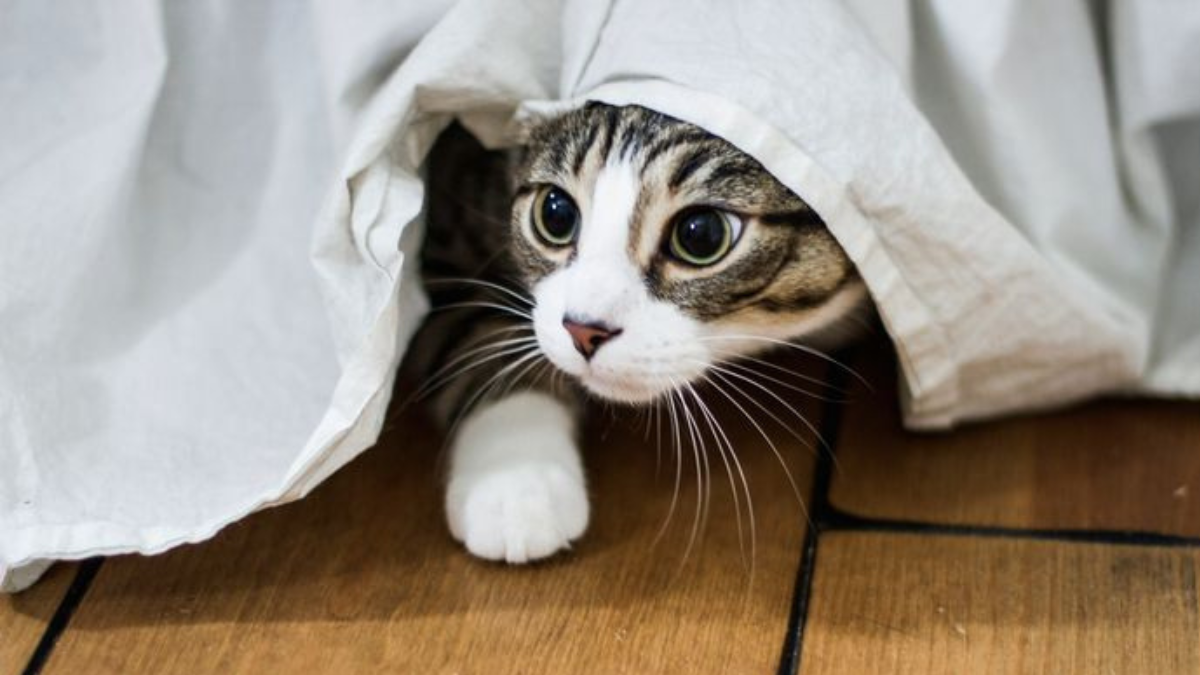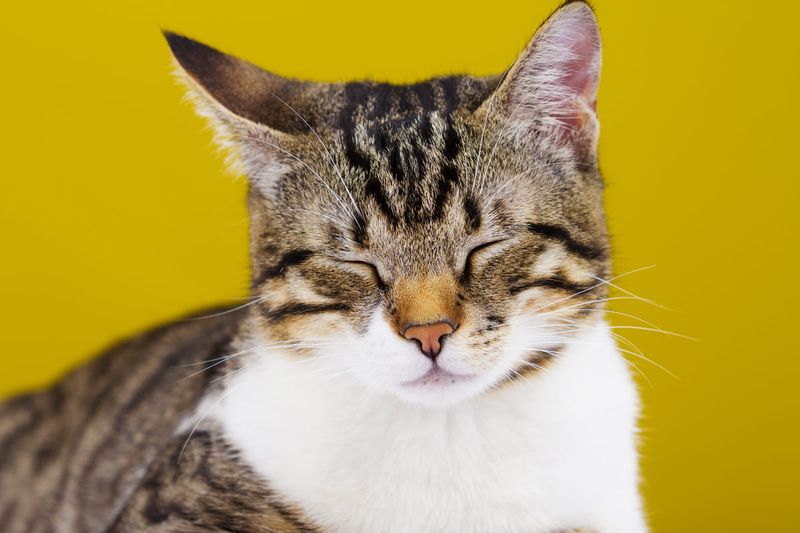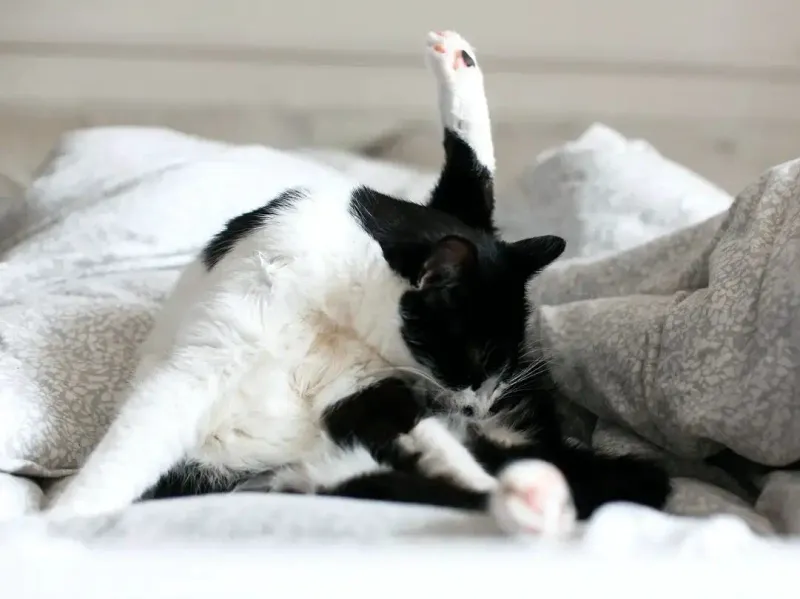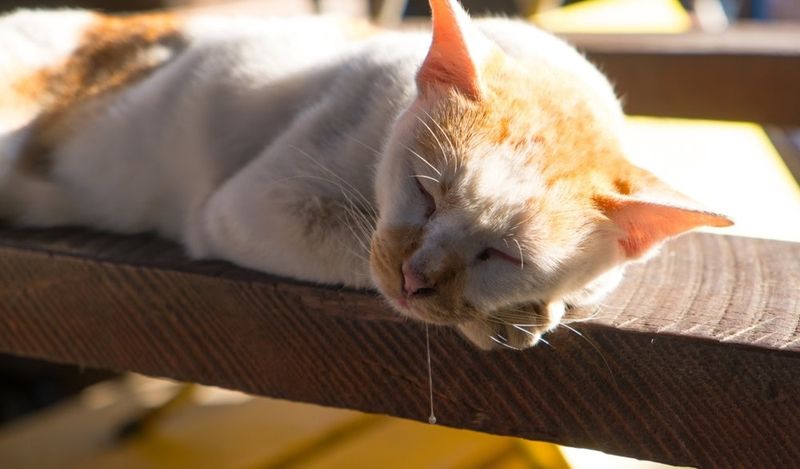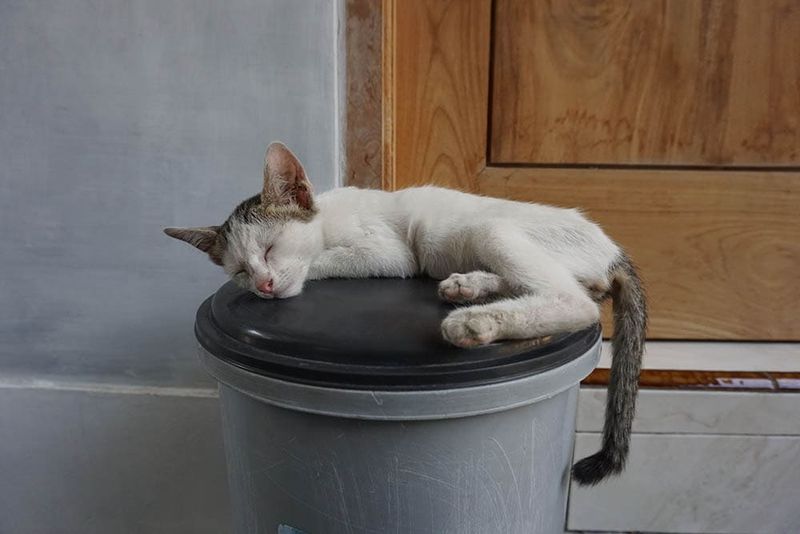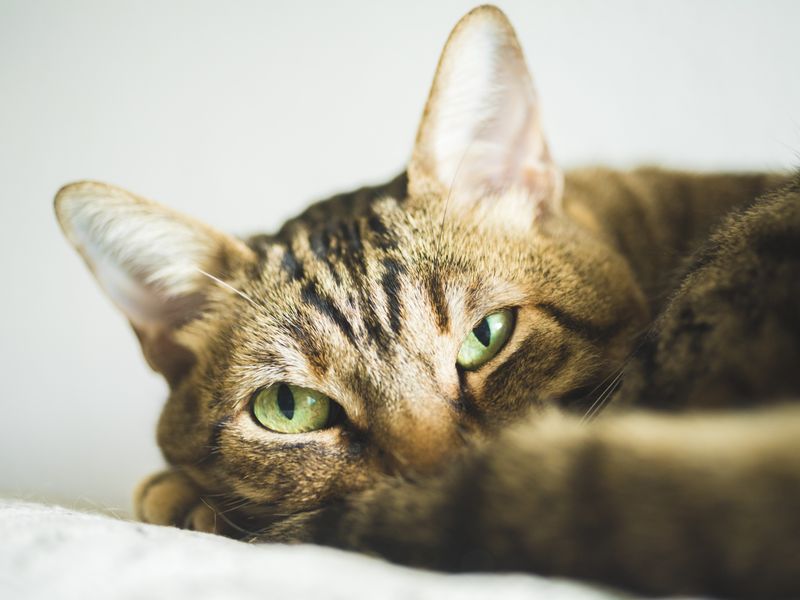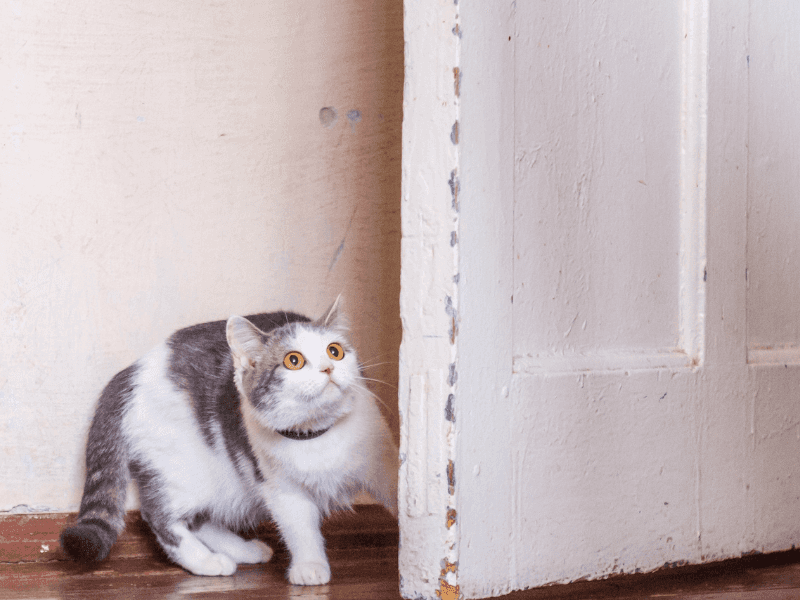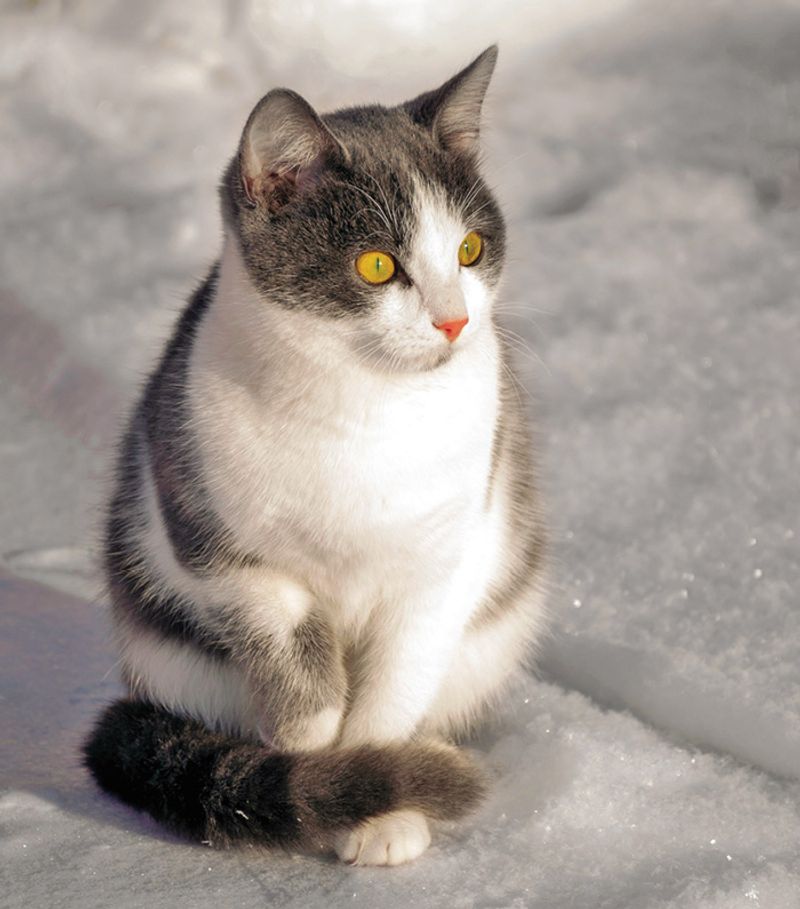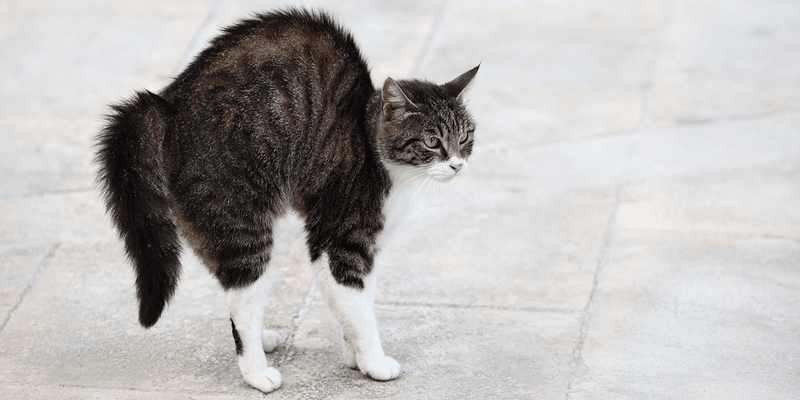📖 Table of Content:
- 1. Slow Blinking More Than Usual
- 2. Excessive Grooming of the Same Spot
- 3. Seeking Higher Ground Quietly
- 4. Hiding in Small, Enclosed Spaces
- 5. Eating Less or Picking at Food
- 6. Sleeping More in Unusual Places
- 7. Avoiding Eye Contact Deliberately
- 8. Moving in Slow Motion
- 9. Sitting Perfectly Still for Long Periods
- 10. Purring When Clearly Uncomfortable
- 11. Excessive Yawning Without Being Tired
- 12. Tail Tucked Close to Body
- 13. Crouching Low to the Ground
- 14. Increased Attention to Escape Routes
Cats excel at subtle communication, especially when experiencing fear or anxiety. Unlike dogs, which often use loud vocalizations like barking or whining, cats rely on quiet, gentle signals to convey their feelings. These understated warnings are their way of expressing discomfort without drawing too much attention.
Recognizing these delicate cues can reveal much about a cat’s emotional state. Changes in body language, posture, or behavior often serve as soft alerts that something isn’t right. Paying attention to these signals helps provide a calmer, more secure environment for the cat.
Responding appropriately to these subtle messages strengthens the relationship between the cat and the owner. Offering reassurance when needed builds trust and reduces stress. Understanding this quiet form of communication is key to a happy, healthy feline companion.
1. Slow Blinking More Than Usual
When cats feel uncertain or mildly stressed, they often increase their slow blinking behavior. This isn’t the same as their usual sleepy blinks.
Your cat might sit facing away from the scary situation while deliberately closing their eyes slowly and reopening them. This gentle signal shows they’re trying to self-soothe and avoid direct confrontation.
Pay attention to the context – if your normally alert cat suddenly starts slow blinking repeatedly during new situations, they’re likely feeling overwhelmed and need some space to feel secure again.
2. Excessive Grooming of the Same Spot
Stress-induced grooming differs significantly from regular cleaning routines. Frightened cats will lick the same area repeatedly, sometimes until it becomes raw or bald.
This repetitive behavior serves as a coping mechanism, similar to how humans might fidget when nervous. Common target areas include paws, legs, and belly regions.
Watch for extended grooming sessions that seem obsessive rather than practical. If your cat spends unusually long periods focused on one body part, they’re likely processing stress or fear through this self-soothing activity.
3. Seeking Higher Ground Quietly
Height provides cats with both safety and a strategic advantage when they feel vulnerable. Scared cats will silently climb to elevated positions like shelves, cat trees, or countertops.
From these vantage points, they can monitor potential threats while maintaining escape routes. The behavior differs from playful climbing because they move deliberately and remain still once positioned.
Notice if your cat suddenly prefers spending time on high surfaces they normally ignore. This elevation-seeking behavior indicates they’re trying to regain control and feel more secure about their environment.
4. Hiding in Small, Enclosed Spaces
Small spaces become safe havens when cats feel threatened. Under beds, behind furniture, or inside boxes provide the security they crave.
Unlike playful hiding during games, scared cats will remain motionless for extended periods. They choose spots where they can observe their surroundings while feeling protected on multiple sides.
This behavior often happens during thunderstorms, when strangers visit, or after moving to a new home. Respect their chosen hiding spot and avoid forcing them out, as this increases their anxiety levels significantly.
5. Eating Less or Picking at Food
Appetite changes often reflect emotional states in cats. When scared or anxious, they may approach their food bowl but only nibble small amounts before walking away.
This isn’t the same as being picky about food brands. Stressed cats will show interest in eating but seem unable to focus long enough to finish normal portions.
Monitor meal times carefully during stressful periods like moving, new pets, or household changes. Gradual appetite reduction combined with other gentle fear signals suggests your cat needs extra comfort and routine stability.
6. Sleeping More in Unusual Places
Fear makes cats seek new sleeping locations that feel safer than their usual spots. They might abandon favorite sunny windowsills for darker, more secluded areas.
Closets, bathrooms, or spare bedrooms become preferred rest areas because they offer privacy and multiple exit options. The sleeping itself becomes deeper and longer as they conserve energy.
Take note when your cat changes their established sleeping patterns without obvious reasons like weather or furniture rearrangement. This location shift indicates they’re trying to find emotional security through environmental control.
7. Avoiding Eye Contact Deliberately
Direct eye contact can feel threatening to anxious cats, so they’ll purposefully look away when approached. This isn’t rudeness but rather a polite way of reducing confrontation.
Your cat might sit near you, but keep their gaze focused elsewhere, even when you’re speaking to them. They’re acknowledging your presence while managing their stress levels.
This avoidance behavior often accompanies other subtle fear signals. Respect their need for indirect interaction and avoid forcing eye contact, which could escalate their discomfort into more obvious fear responses.
8. Moving in Slow Motion
Scared cats often move as if they’re walking through invisible molasses. Every step becomes calculated and deliberate, unlike their usual fluid grace.
This slow-motion movement helps them stay alert to potential dangers while avoiding sudden actions that might attract unwanted attention. They’re essentially trying to become invisible through careful motion.
Watch for this behavior during new experiences or environmental changes. When your normally agile cat suddenly moves like they’re underwater, they’re processing fear while trying to maintain some control over their situation.
9. Sitting Perfectly Still for Long Periods
Freezing in place is a common fear response that many people overlook. Scared cats will sit statue-still, barely breathing, hoping to avoid detection by whatever frightens them.
This isn’t the relaxed stillness of contentment but rather tense immobility. Their muscles remain coiled and ready for quick escape if necessary.
During these frozen moments, cats are hyperaware of their surroundings while trying to appear invisible. Sudden movements or loud noises during these times can trigger more dramatic fear responses, so approach gently.
10. Purring When Clearly Uncomfortable
Not all purring indicates happiness – cats also purr when scared as a self-soothing mechanism. This stress purring sounds different from contentment purrs, often more rapid or irregular.
They might purr while displaying other fear signals like crouching or hiding. This combination of behaviors shows they’re trying to calm themselves during stressful situations.
Learn to distinguish between happy purrs and anxious ones by observing the body language context. Stress purring accompanied by tense posture or avoidance behaviors indicates your cat needs gentle reassurance and patience.
11. Excessive Yawning Without Being Tired
Stress yawning helps cats release tension when they feel overwhelmed. Unlike sleepy yawns, these are more frequent and often accompanied by alert, wide-open eyes.
This behavior serves as both a calming signal and a way to increase oxygen intake during anxious moments. Cats might yawn repeatedly during vet visits or when meeting new people.
Notice the timing and frequency of yawning episodes. Multiple yawns in quick succession, especially in stimulating environments, suggest your cat is using this gentle mechanism to cope with building stress levels.
12. Tail Tucked Close to Body
A tucked tail signals vulnerability and the desire to appear smaller. Scared cats will wrap their tails around their bodies like a security blanket or keep them pressed close to their sides.
This protective posture differs from the dramatic puffed tail of extreme fear. Instead, it’s a subtle way of creating a physical barrier while showing submission to potential threats.
Pay attention to tail position during various activities. When your cat’s usually expressive tail becomes consistently tucked or wrapped, they’re likely feeling insecure and need environmental adjustments to feel safe.
13. Crouching Low to the Ground
Low crouching makes cats appear smaller and less threatening to whatever scares them. They’ll press their bellies close to the ground while keeping their heads up to monitor their surroundings.
This position also prepares them for a quick escape if needed. Unlike playful crouching before pouncing, fear-based crouching involves tense muscles and nervous energy.
Recognize this posture as a clear request for space and understanding. Cats in this position feel exposed and vulnerable, so avoid approaching directly or making sudden movements that might trigger flight responses.
14. Increased Attention to Escape Routes
Scared cats become hyperaware of exits and will position themselves strategically near doors, windows, or other escape paths. They’re constantly calculating their options for quick departure.
You might notice your cat spending more time in doorways or areas with multiple exit points. They’ll frequently glance toward these routes even during calm moments.
This behavior shows they’re feeling trapped or overwhelmed by their current situation. Creating clear pathways and avoiding cornering your cat helps reduce this anxiety-driven need for escape planning and positioning.
